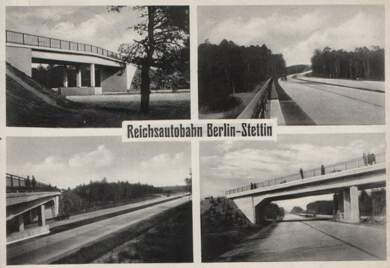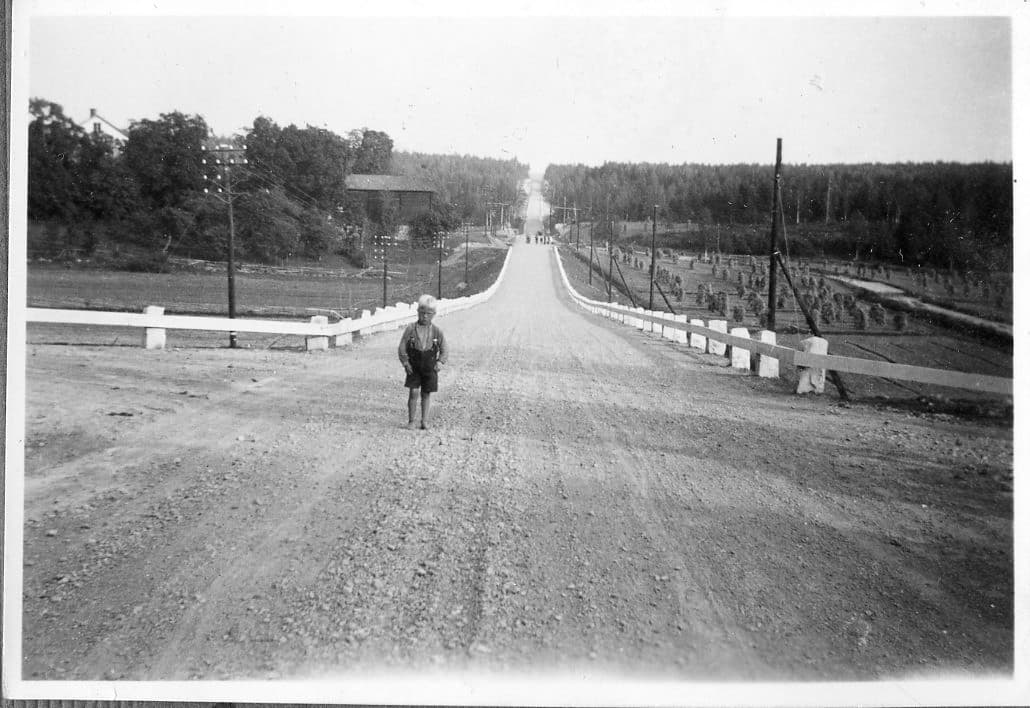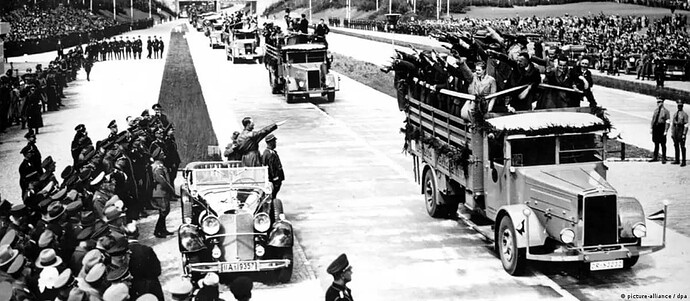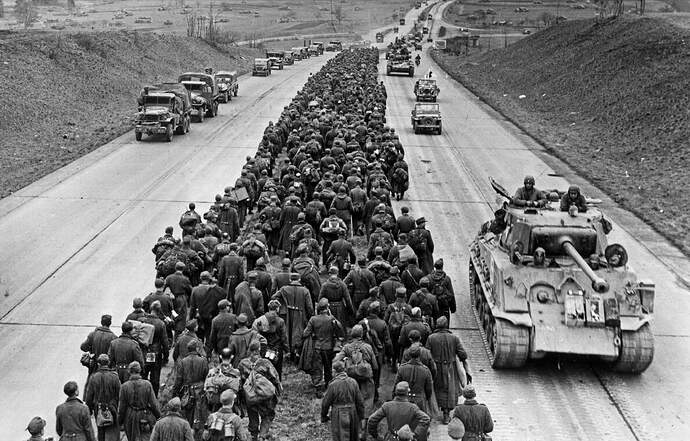So what did Europe do for highways?
Same as everyone else I expect.
The UK didn’t have a motorway until the mid or late 50s, I think Germany were ahead of the game and had theirs a lot earlier ?
I would imagine Motorways /large multilane road networks were not essential or needed until you had the explosion of wheeled motor vehicles when people and goods started to travel more and that was then the cheaper option …
Before that, it would likely of been horse drawn transport based, canal systems etc, and just inter connecting smaller roads/ lanes as the traffic footprint would of been considerably less at the start of the wheeled revolution and as that increased, bigger roads became essential.
The first Autobahn in Germany was opened on the 6. August 1932, the A 555 today between Bonn and Cologne. Back then, it was called “Kraftfahrstrasse”, not Autobahn. It was opened by the mayor of Cologne, Konrad Adenauer, who we all know in a different political position many years later …
Before the autobahn and similar motorways, there were the local roads and highways that connected towns. These were adequate for most pre-WW2 traffic, but were barely wide enough for two trucks to pass each other, and got mighty twisty as they passed through old towns.
And who’d want to live in the era before the autobahn?
As the first Chancellor of the German Federal Republic (Bundesrepublik Deutschland) (1949-1963). Founder of Germany’s Cristian Democratic Union (CDU) and considered, one of the fathers of the European Union.
Under his leadership, Germany joined NATO and he was the driving force behind the creation of Germany’s Armed Forces, the Bunderswehr.
Narrow gravel roads.
Heavy transport was by railroad,
moving 30 tons with trucks with a 3 ton payload took forever.
Ships and barges where there was water.
Germany had an extensive canal/river network and plenty of railroads.
A Swedish state road back in 1930. A road connecting counties
They used the old Roman roads ![]()
Before the Autobahns… ![]()
Hitler would not have been able to invade his neighbors as easily.
One of my favourites
Does anybody really still believes in this myth?
It depends upon whom you wish to believe. It’s the internet after all - you can find any evidence you want to support whatever belief you have. I have no intention of engaging in a pissing contest but I will offer this:
At the outset of World War II in Europe, the autobahn proved to be a key asset to Germany. The German blitzkrieg (“lightning war”), which involved massive coordinated air and ground attacks to stun opponents into defeat, was a key to the German defeat of Poland in 1939, Belgium, Luxembourg, and the Netherlands in 1940, and the Soviet Army in 1941. The highway network also enhanced Germany’s ability to fight on two fronts-Europe in the west, the Soviet Union in the east.
Additionally I have a bit of firsthand knowledge - my starter wife was from Berlin. Her father was quite a bit older and had fought on the Eastern Front. She believed the autobahn helped speed up the German economic recovery in the 1930’s, largely because her father beleived it. He and I discussed many things but I don’t recall ever talking about this with him myself. However, his belief was apparently shared by many Germans of his time, which helped Hitler gain popularity, deservedly or not. Ergo, he gained more power which of course led to said invasion of Europe. So whether directly or indirectly, yes I suppose I believe the myth as you say.
Feel free to post your own thoughts. I’m moving on.
Planning for the AVUS ring in Berlin started off in 1907 and it opened in 1921.
The Autobahn between Köln (Cologne) and Bonn opened in 1932 (August 6)
approximately half a year before Hitler came to power (Januari 30th 1933).
What Hitler did was that he expedited the building of Autobahns in Germany.
Approximately a quarter of the current Autobahn network consists of roads built
while Hitler was in power. A lot of it was built using forced labour provided by prisoners of war and prisoners from concentration camps.
The last original (untouched since it was built) Hitlerbahn was rebuilt around 2013.
Hitler didn’t invent them, building them didn’t do much to unemployment either, Hitlers regime made sure that they got built.

Edit: Truth and propaganda isn’t the same thing but the “official truth” is what “everyone” believes (true or not)
And dudes like me were racing up and down it on our bikes like maniacs in the 80’s.
The Spinner-Bruecke is where we’d hang out. The bike in the foreground is mine before I painted it black:

Hilter’s Autobahn did not help me invade Europe, but it helped me invade panties through out Europe - nothing thrills a girl quite like going 200 kph on the back of some dude’s bike. My V65 was one of the fastest street bikes in Germany at the time. By law, they were limited to 100 HP. Mine was ungedrosselt, meaning it enjoyed the full 116- 121 horsepower - again, depending upon your internet source.
Lucky for you that you didn’t come speeding up behind a Swedish driver who suddenly decides to switch into the fast lane because he thinks he drives fast doing 120 kph.
Swedes driving south to Germany gets told that they need to watch the rear view mirrors constantly unless they are above 200 kph. Swedish slowpokes need to stay with the trucks until they have learned the system.
Another piece of trivia: 61% of the Swedish drivers think they drive better than the average driver …
From a poll made in 2017:
| How would you rate your driving skills | Total | Woman | Man |
|---|---|---|---|
| Very bad [1] | 1% | 1% | 1% |
| Worse than average [2] | 3% | 3% | 3% |
| Average [3] | 34% | 42% | 27% |
| Above average [4] | 40% | 35% | 45% |
| Very good [5] | 21% | 19% | 24% |
Only 4 percent think they are below average …
Years ago I worked with a Dutch guy who was pulled over doing 120kph in his clapped-out Renault 5 on an unrestricted section of autobahn because the cops didn’t believe his car was safe at any speed…
Not much need for Swedes to use the AVUS. It led southwest out of Berlin. Exactly the wrong direction, unless they had business in the DDR.
Some did visit Berlin, I was there as a kid back in 1972.
I thought you rode your bike and invaded panties throughout Europe?
Up until the late 17th Century in England roads were maintained by the parish through which the road passed. Then some parishes were given the power to charge tolls to maintain increasingly heavily used routes. The individual Acts of Parliament which permitted this became available to groups of entrepreneurs know as Turnpike Trusts who saw the opportunity for profit. The improving roads came about around the establishment pf canals for the movement of heavy goods. In the late 18th and early 19th Centuries techniques of roadmaking started evolve leading to higher speeds being available to wheeled vehicles such as Mail Coaches. Finally, surfaces began to be applied utilising first Coal Tar and later Bitumen, the first ever route to receive this treatment being Radcliffe Road, West Bridgford in Nottingham in 1902.
Cheers,
M
Not all of Europe. Although my rudimentary Danish might have gotten me by in Sweden.
In the DDR the speed limit was100 kph. Torture! They were the same autobahns, only not in as good shape. When traveling from Checkpoint Bravo to Checkpoint Alpha the Russians would check your time stamp on your flag orders - if you arrived to soon you could suffer consequences. I’m not quite sure what they were. I would race across “the zone” as fast as I could, and simply wait within sight of the checkpoint until enough time had elapsed. There was little they could do. Probably little they wanted to do. I traded with the guards on every trip. The thing that usually impeded me was the Trabis. I’m not sure most of them could even do 100 kph.



